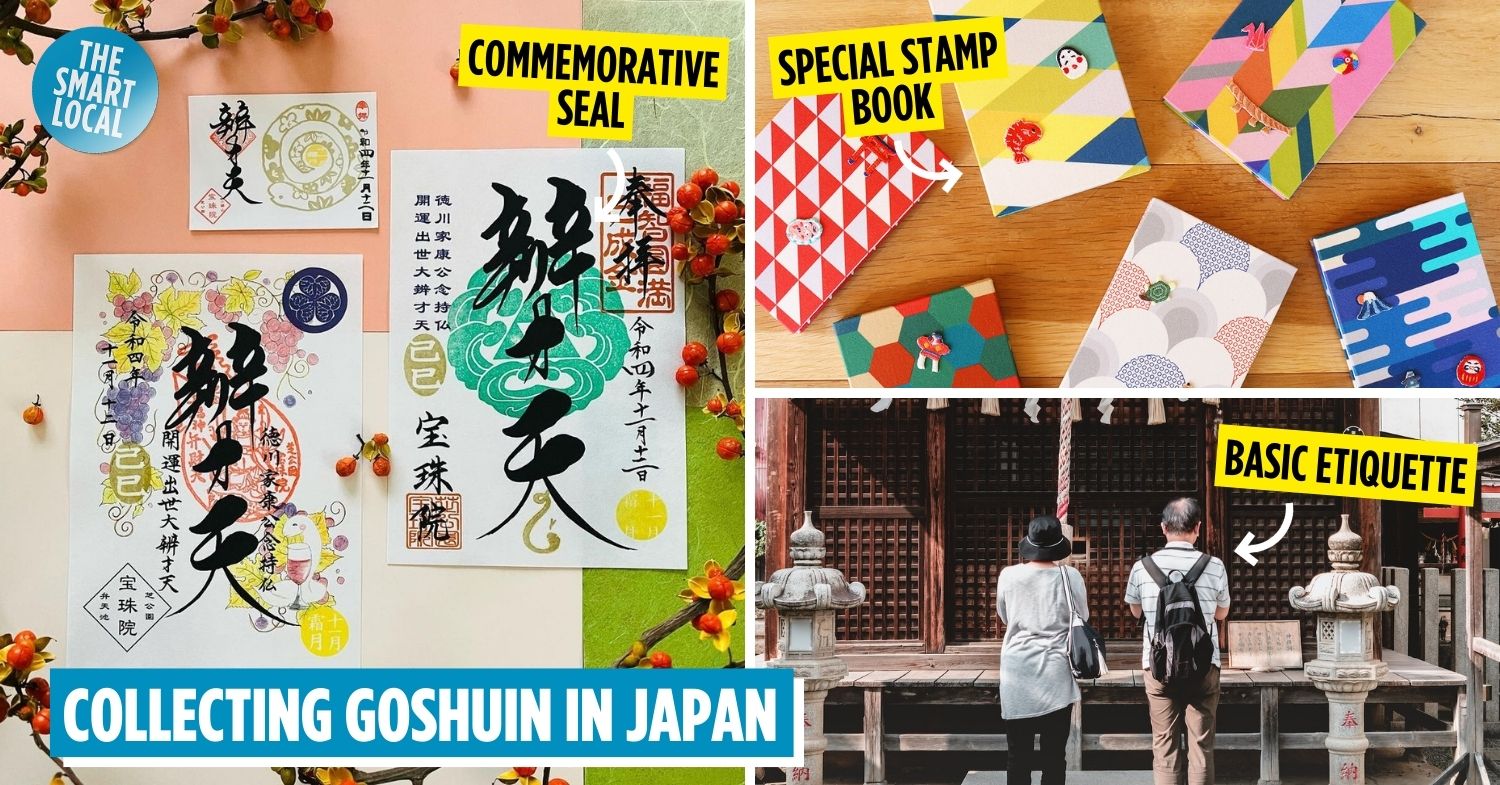Goshuin guide
If you’ve seen people queuing up with a dainty book in hand at shrines or temples, chances are they are waiting to get a goshuin inscribed. A beautiful keepsake that’s highly popular amongst travellers, goshuin refers to traditional seal stamps that are unique to these religious sites in Japan.
Table of Contents
1. What is a goshuin?
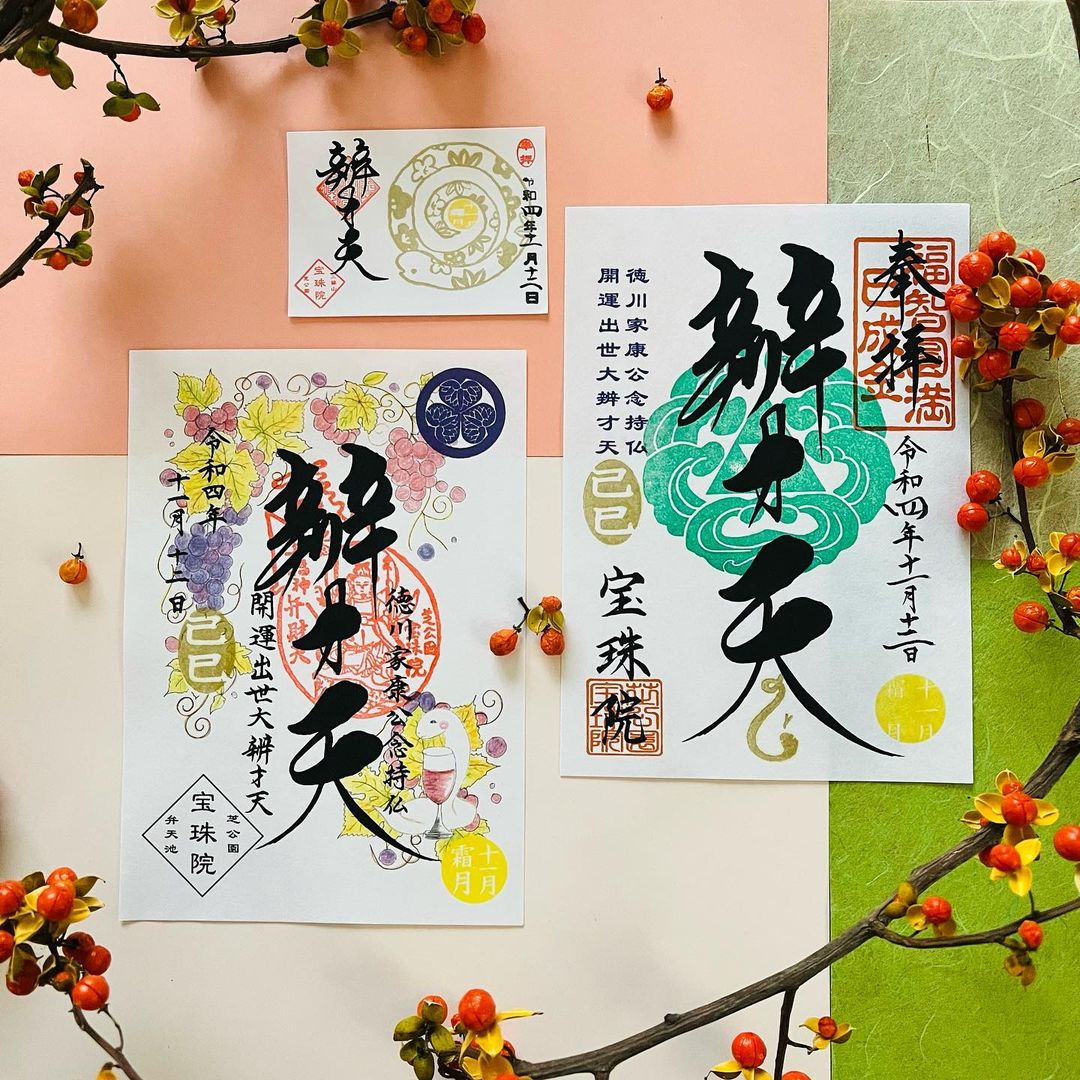 Image credit: @hoshuin
Image credit: @hoshuin
A type of commemorative seal that can be collected, goshuin (御朱印) certifies a person’s visit to a particular shrine or temple. Historically, visitors can only receive the traditional stamp after they dedicate a handwritten sutra to the temple.
Hence, it was also known as nōkyōin (納経印; stamp for presenting a hand-copied sutra to a temple) in the past. However, the name gradually grew obsolete as the practice also became widespread in shrines during the Edo period.
Today, they can be easily purchased for a small fee, and goshuin stamp collection is incredibly popular amongst travellers.
2. Significance of the goshuin
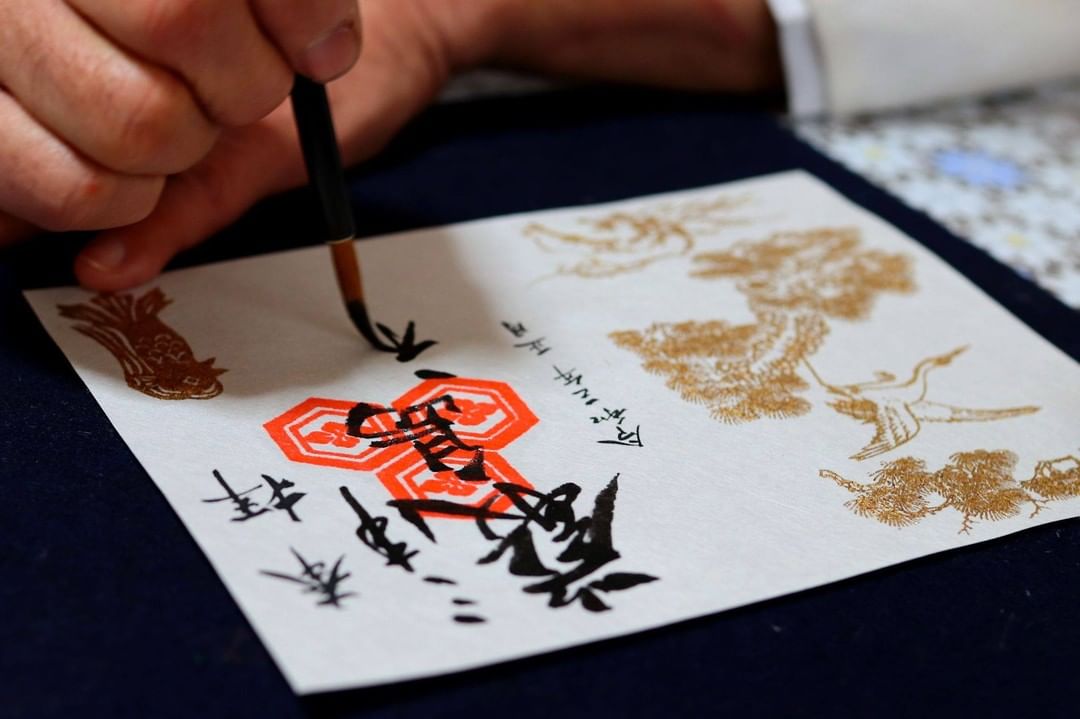
Image credit: @itsukusima_m
While the seal has evolved to be a collectible for domestic and international travellers alike, its roots are more spiritual in nature. Handwritten by priests (神職; shin shoku) and monks, and comprising the shrine’s crest and official seal, the goshuin is considered scared.
A goshuin symbolises your ties to the god or deity (神; kami) of the shrine, and you can think of it as a bridge between you and the god.
3. Dissecting the traditional seal stamp
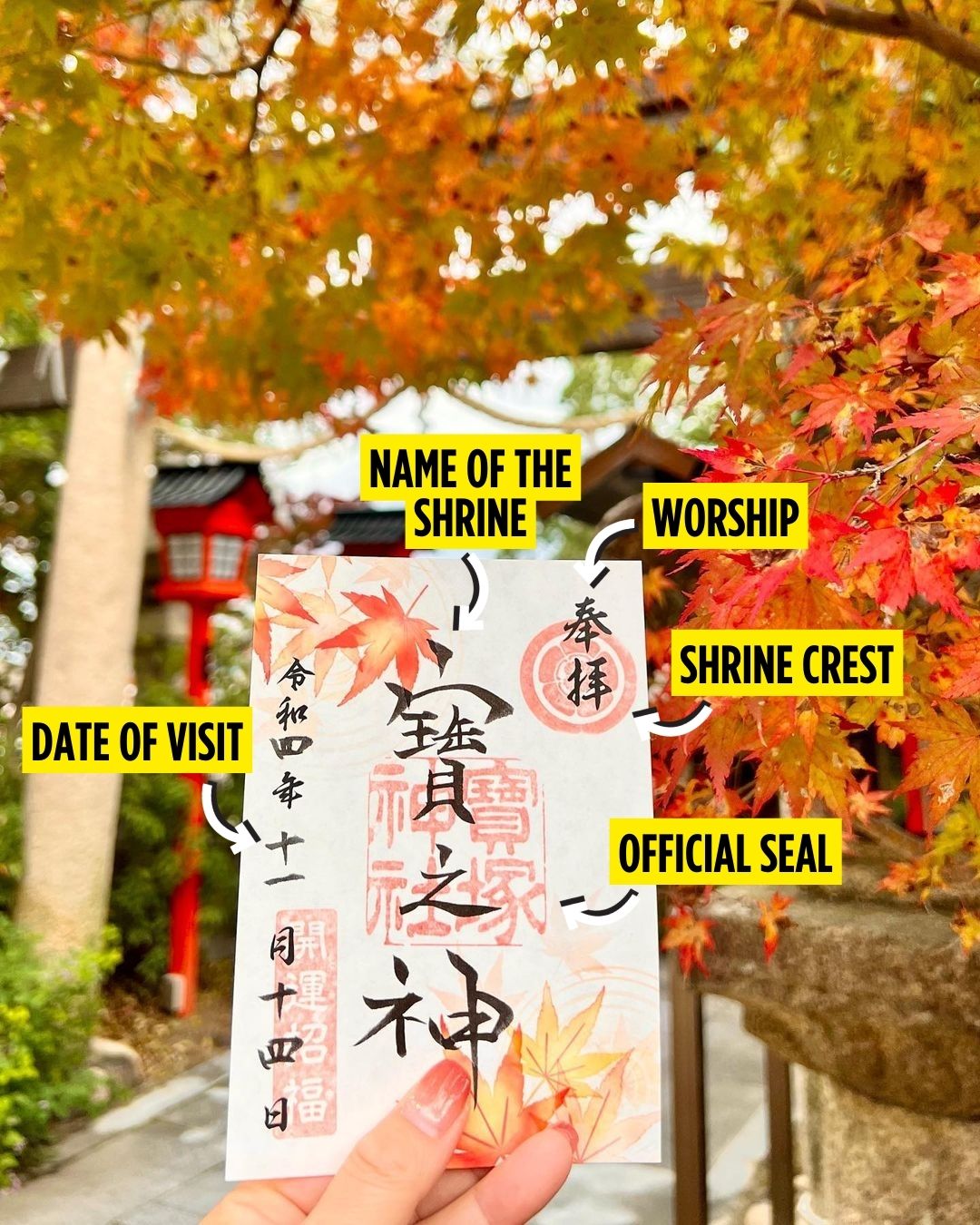 Image adapted from: @goshuin.luv
Image adapted from: @goshuin.luv
Adorned with a bright vermillion stamp and complemented by extravagant calligraphy, goshuin seals differ based on where it originated from, and it’s a thrill to spot the differences. While the design varies according to the place, its anatomy is pretty standard.
Hōhai (奉拝): it translates to “worship”, and it’s short for “謹んで奉拝させていただきました” (I respectfully worshipped; tsutsushinde hõhai sasete itadakimashita).
Shrine crest (神紋; shinmon): every shrine has its unique emblem, which is determined by its history and deity enshrined.
Official seal: the engraved seal with the shrine’s name is typically imprinted in the centre.
Name of shrine: the shrine’s name is calligraphed and takes up the biggest space on the page. Occasionally, you may spot goshuin with the enshrined deity’s name instead.
4. Types of goshuin
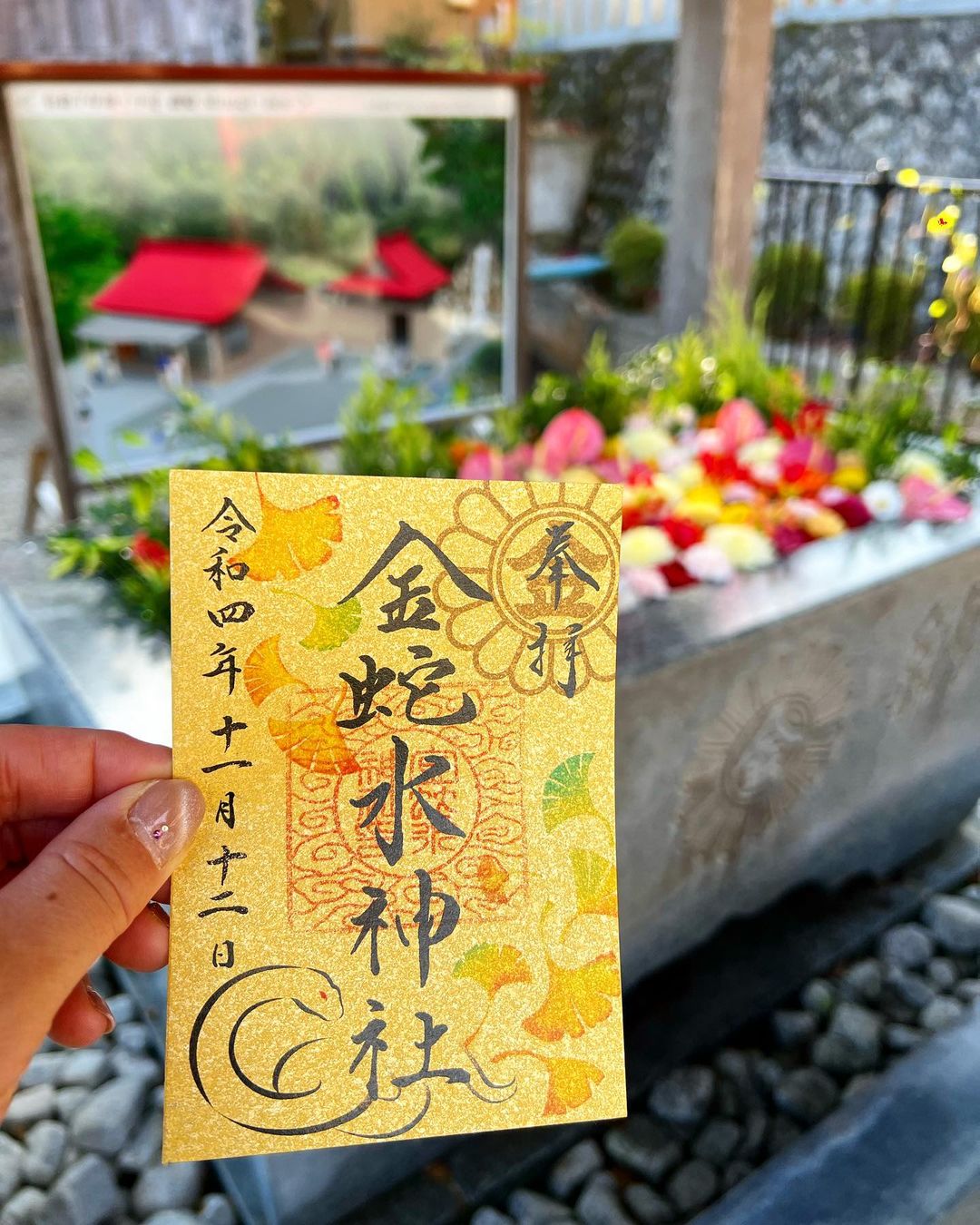
Goshuin with a snake and ginkgo motifs.
Image credit: @yuzuan4444
Besides acting as proof of pilgrimage to temples or shrines, goshuin are also fun items to amass as every seal is different. Obvious elements such as shrine name, and motifs, which reflect the place’s history and what they are known for, vary.
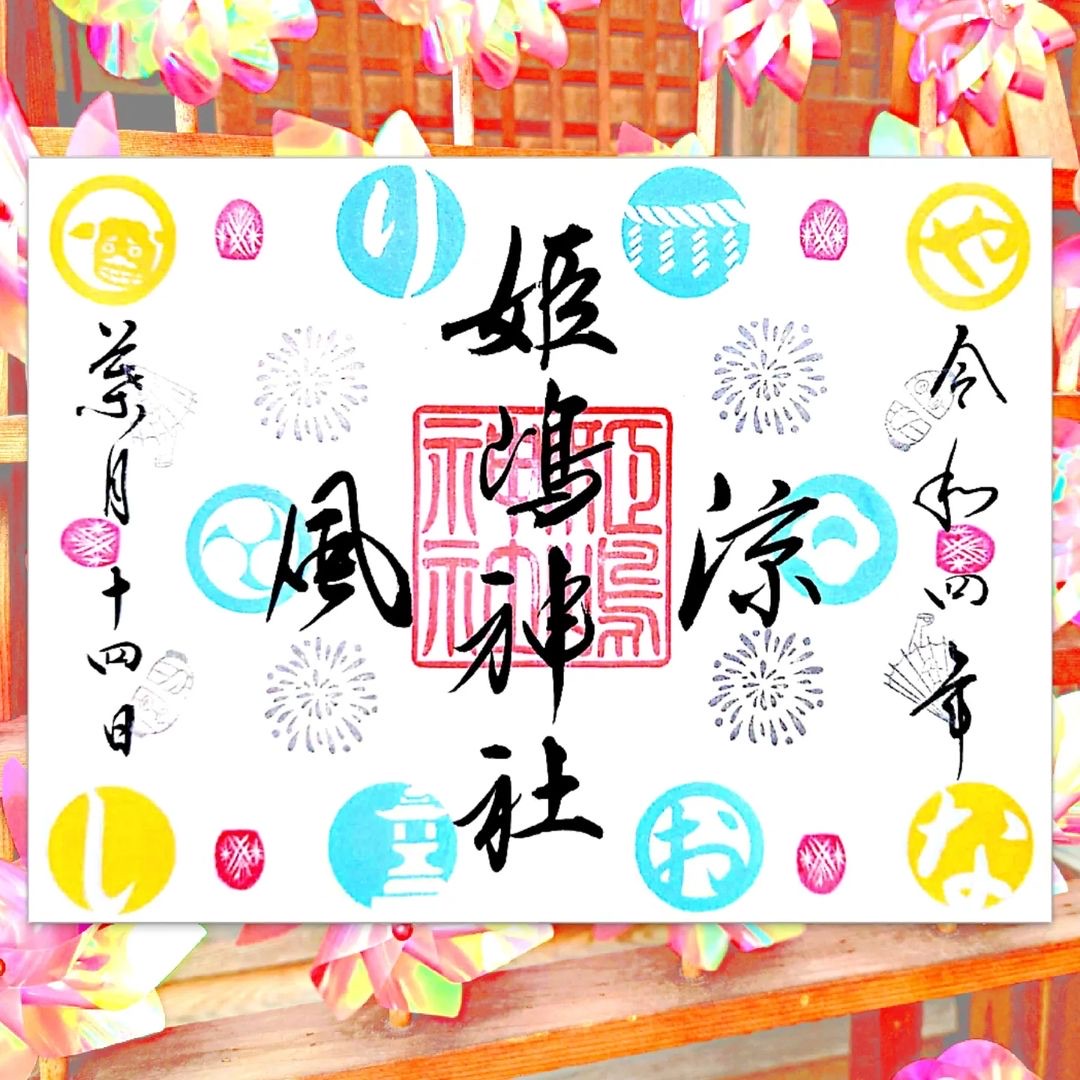 Image credit: @soba.goshuin
Image credit: @soba.goshuin
For instance, the ginkgo motif (銀杏紋; ichō mon) symbolises longevity, while the rice plant motif (稲紋; ine mon) is typically used by shrines dedicated to the deity of harvest.
On special seasons and festivals, some goshuin are even zhooshed up with coloured ink and beautiful illustrations.
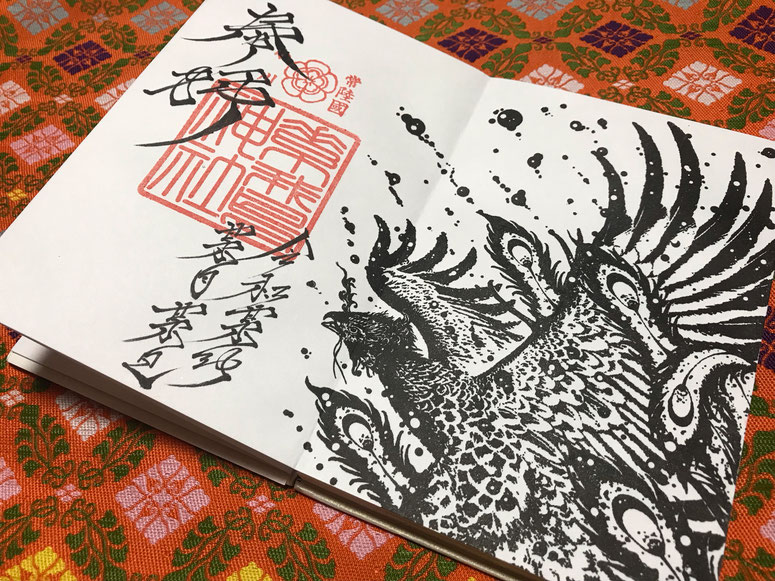
Image credit: Soga Jinja
While most goshuin take up 1 page in your collection book, some more elaborate ones are spread across 2 pages. You never know what you’ll get until it’s done, so it’s always an exhilarating moment waiting for the freshly inked seal.
How to collect them
1. Get a goshuinchō
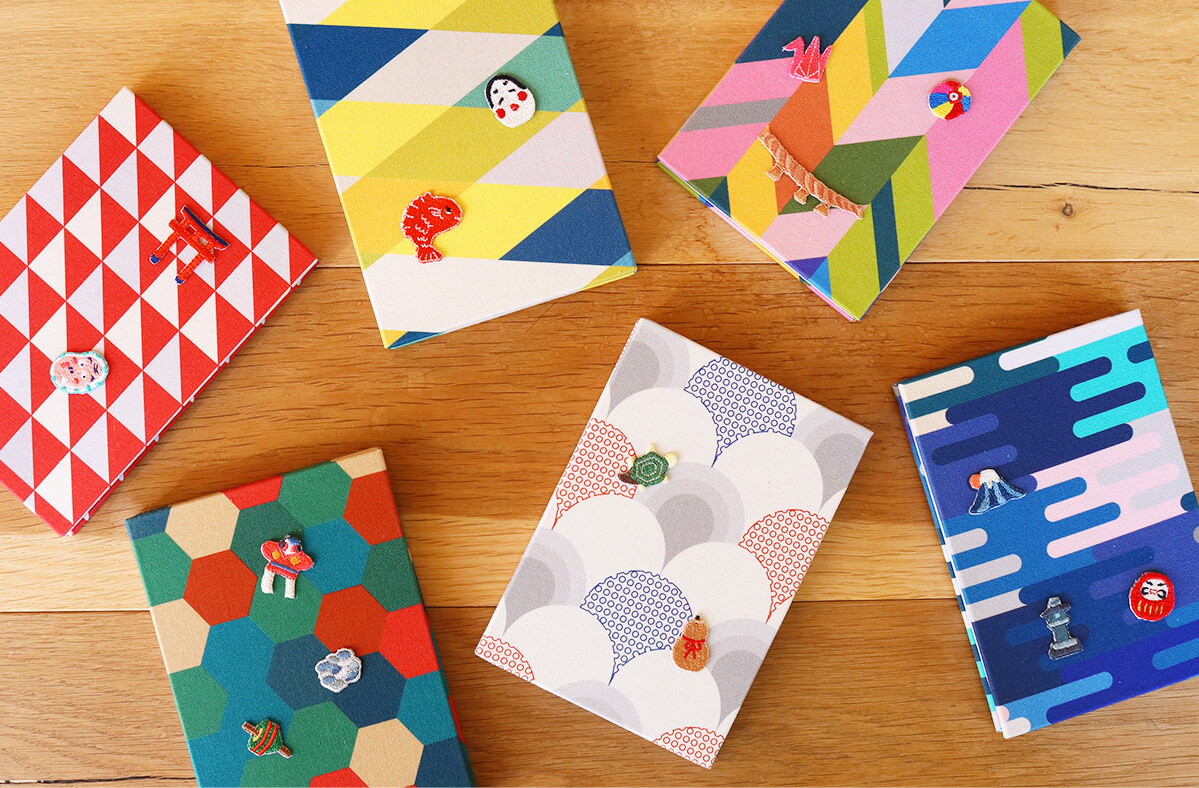 Image credit: PLAYCOURT
Image credit: PLAYCOURT
To get started on your collection of goshuin, you must first purchase a goshuinchō (御朱印帳). It is a pocket-sized stamp book that opens up like an accordion, and they can be easily found in bookstores, shrines, and temples. Price ranges between ¥1,000 (~USD7.17) to ¥1,500 (~USD10.76) for basic ones, but fancier ones are priced from ¥2,000 (~USD14.35) onwards.
Normal notebooks are generally not accepted, and some stricter places may even reject mixed goshuinchō. For serious hobbyists, prepare 2 separate stamp books – one that’s reserved for shrines and the other for temples.
Some shrines and temples inscribe the seal onto loose-leaf papers, which can be stuck onto the pages in your book.
2. Pay your respects at the shrine or temple first
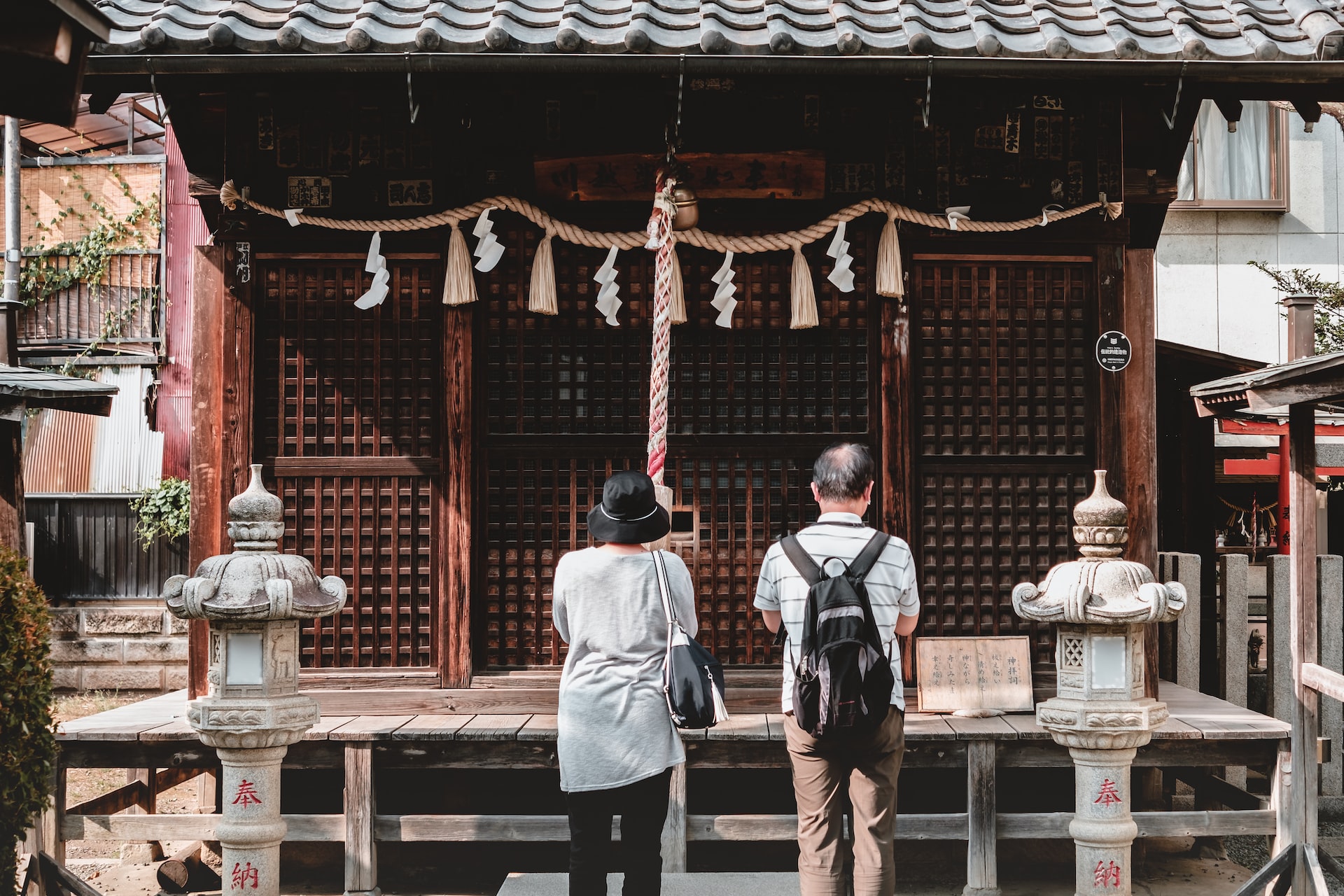 Image credit: Kentaro Toma
Image credit: Kentaro Toma
Once you’ve gotten your hands on a goshuinchō, it’s time to make a trip down to get them inked. Goshuin are after all religious in nature, and are not just commodities you can purchase casually. Hence, pay your respects first to the shrine or temple before heading to the reception area to request for a goshuin.
3. Request for a goshuin at the reception area
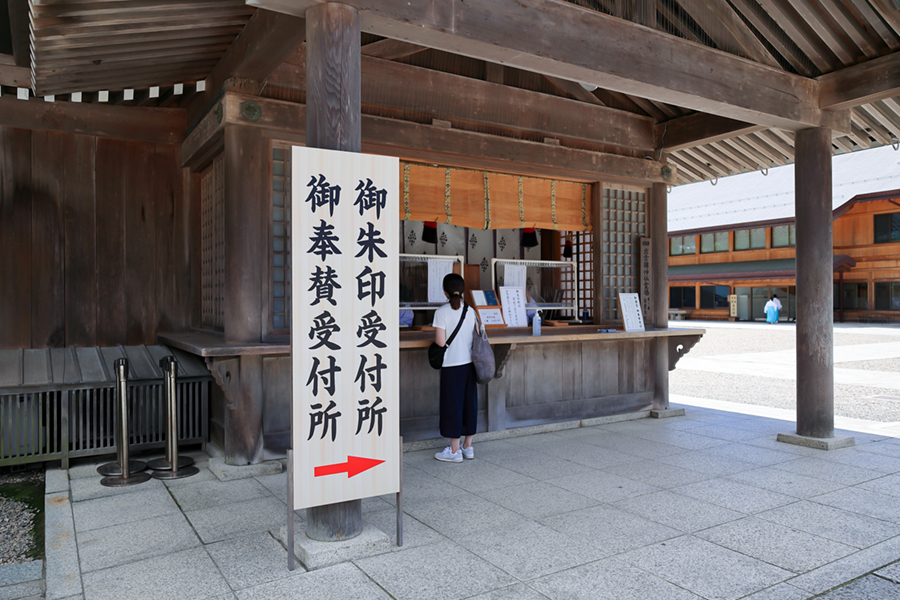 Goshuin reception at Izumo Grand Shrine, Shimane Prefecture.
Goshuin reception at Izumo Grand Shrine, Shimane Prefecture.
Image credit: Shimane Kankō Nabi
After you’ve offered a prayer, head to the reception area, which is typically indicated by a sign that says “御朱印受付所” (goshuin uketsukesho). If you’re lost, look out for the area that sells omamori (お守り; lucky charms) and the like – they should be in the same location.
Open your book to a blank page where you’d like the seal to be inscribed and hand them over to the counter.
Tip: some of the more popular shrines will ask that you leave your goshuinchō at the reception. In return, a chip with a number will be provided, which you can use to pick up the book before leaving.
4. Price range
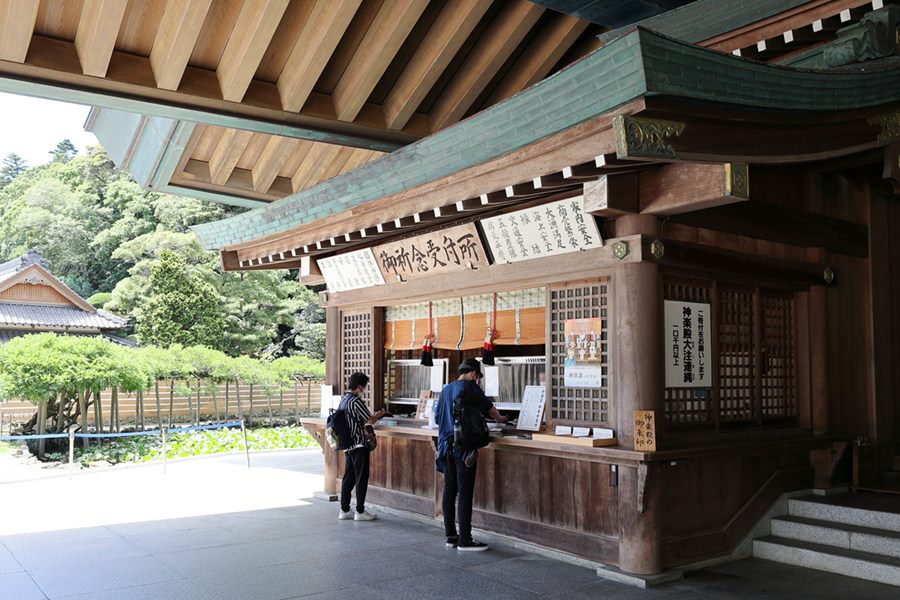 Image credit: Shimane Kankō Nabi
Image credit: Shimane Kankō Nabi
Goshuin typically range from ¥300 (~USD2.15) to ¥500 (~USD3.69), though it’s not unusual to see limited edition ones with elaborate designs go for up to ¥1,000 (~USD7.17).
Goshuin guide
Collecting goshuin is not only a fun way to keep a memento of the places you’ve been to, but it’s also a relatively affordable way to amass gorgeous pieces of calligraphy. Once you’ve filled up a book, start on a new one. After all, the sky’s the limit, and there are plenty of shrines and temples in Japan to visit.
For more, check out:
- Tsushima shrine, a shrine that only opens 2 days a year
- Namba Yasaka Jinja, a shrine known for its imposing lion head
- Shrines to visit other than Meiji Jingu and Fushimi Inari Taisha
- Porcelain galore at Tozan Shrine
- 20,000 dolls at Awashima Shrine
Cover image adapted from (clockwise from left): @hoshuin, PLAYCOURT and Kentaro Toma
